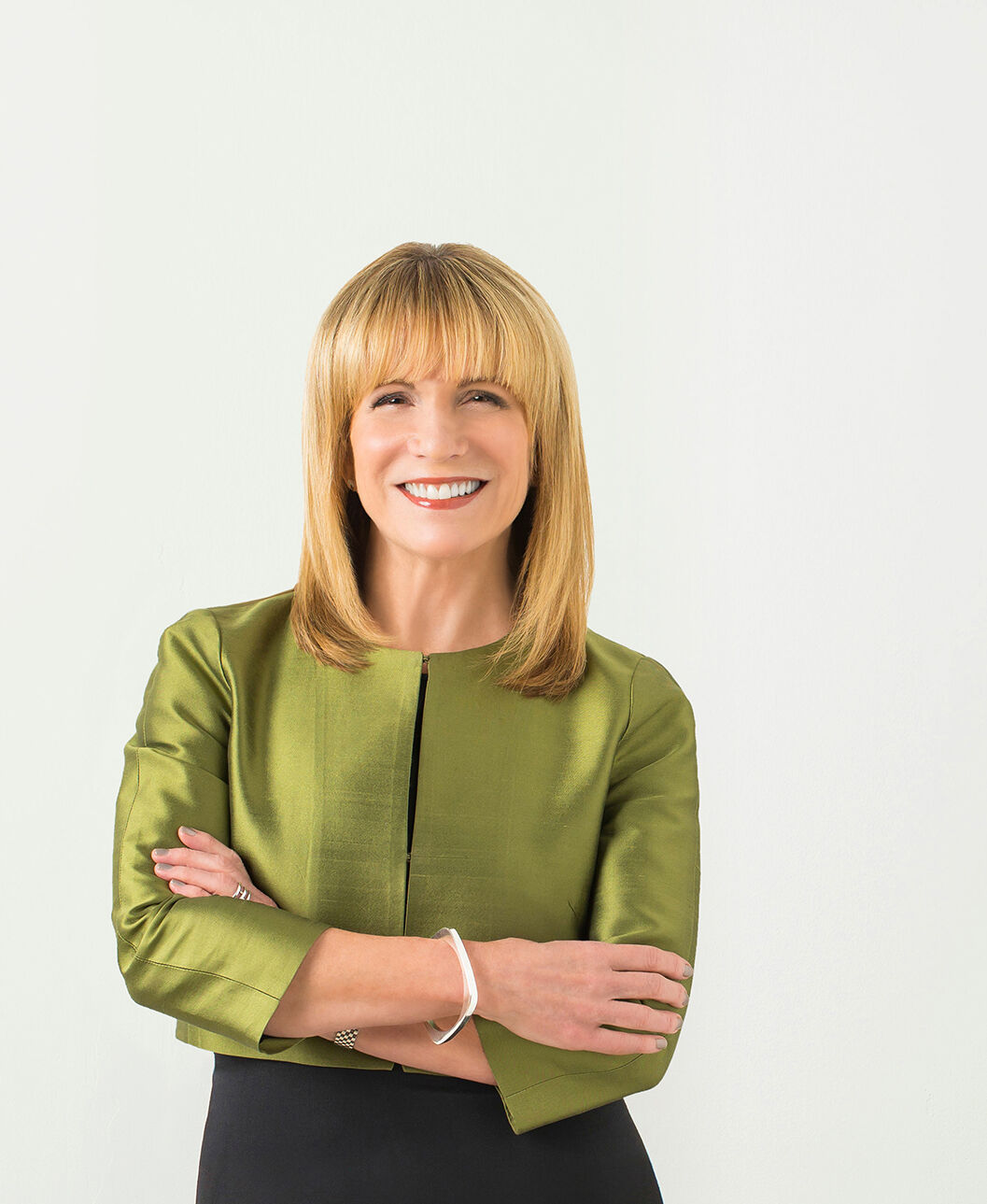
What Comes Next
September 2016
Elissa Tenny Takes the Helm as President

In the lead-up to July 1, her first day as President of the School of the Art Institute of Chicago, Elissa Tenny was enthusiastic about SAIC’s future. “I’m exhilarated by the idea of leading the School. It’s such a vibrant institution,” Tenny says of being the first woman selected as the School’s President.
Tenny is an advocate for what she calls the “graduate citizen” and thinks SAIC is ideally positioned to develop artists, designers, and scholars who can make a positive impact on the world. “Our students see things from very different angles and perspectives,” she says. “Every day they seek larger meaning and synergies and learn to use their creativity as they’re figuring out their meaning and making. These are important life skills that help them make sense of the world.”
This optimism is the result of more than 35 years in higher education, including six at SAIC working with students, faculty, staff, and former President Walter E. Massey. Tenny came to SAIC as its first Provost and Senior Vice President of Academic Affairs in 2010. The School had recently established the office to oversee its strategic priorities and to strengthen its administration, and Tenny was the perfect fit for the job. She had a doctorate in education and eight years’ experience as Provost and Dean of Bennington College in Vermont, and she previously held leadership positions at The New School in New York City.
Together Tenny and Massey strengthened the School’s financial position, increased transparency and participation in the budgeting process, and stewarded the strategic priorities. The partnership was so strong that Massey agreed to stay at SAIC as Chancellor when Tenny became President. She says she’s thrilled to “continue to take advantage of Walter’s extraordinary knowledge and experience and his great humanity.”
The foundation for Tenny’s success at SAIC was laid in 2010 when she organized action groups of faculty, staff, and students around the School’s first strategic plan, each devoted to implementing and addressing one of SAIC’s seven strategic initiatives: improving organizational effectiveness; developing a campus master plan; increasing diversity; identifying exceptional prospective students; providing structure and support for students; strengthening research and collaboration efforts; and solidifying additional funding sources beyond tuition. The work of these groups, guided by Tenny, has transformed the School.
“We have been able to achieve some of our goals outright. Other undertakings have been woven into the [ongoing] work we all share in making SAIC the vibrant hub of many communities,” Tenny writes in the Final Report on the Strategic Plan, published in September 2013. Building diversity on campus and deeper engagement with partners across the city are initiatives whose work has been woven into life at SAIC.
For example, through the work of the Diversity Advisory Group, a direct outcropping of the Strategic Plan, grants and workshops are infusing the curriculum and classrooms with inclusive conversations and diverse guest speakers, images, and assignments, and two new permanent positions now support diversity initiatives at the School. At the same time efforts to build a student body more reflective of Chicago’s own diversity have begun to pay off.
As SAIC graduates bring their creative skills to different fields, they can go out and make the world better. They can make it more whole.
Applications from Chicago Public Schools graduates have increased significantly in recent years thanks to the College Arts Access Program (CAAP), a bridge program that prepares high school students for college, and the Walter and Shirley Massey Chicago Scholarship Fund, a need based, full-tuition scholarship fund that supports Chicago Public Schools graduates. More than $1.2 million was raised for the scholarship fund at the School’s 150th Anniversary Gala in May 2016 when Tenny and Massey announced the public launch of a $50 million fundraising campaign called Beautiful/Work: The Campaign for SAIC. Especially gratifying for Tenny is that $23.2 million—nearly half of the campaign goal—has already been raised to provide students with scholarship support.
As the School draws in students from all corners of the city to its campus, it has also expanded its campus out into the city. The Earl and Brenda Shapiro Center for Research and Collaboration, part of the newly formed Office of Engagement, opened SAIC’s first classroom space outside of downtown in the newly renovated Nichols Tower in the city’s North Lawndale neighborhood. After years of decline and middleclass flight, the neighborhood is being revitalized with new housing and opportunities. SAIC offers art and design classes to residents, an artist-in-residency program, and classrooms for SAIC degree courses. “We’ve become a very valued neighbor over the past three years,” Tenny says.
Elissa Tenny and Walter Massey also stewarded a restructure of the Career and Professional Experience office and the launch of SAIC’s Low-Residency (Low-Res) Master of Fine Arts program. This summer SAIC celebrated the graduation of its first class of Low-Res students, 35 interdisciplinary artists whose work radiates outward as they return to their homes and studios around the globe.
In reflecting on SAIC’s unique educational model, Tenny recalls a quote from the artist Anish Kapoor, who spoke of living “in a fractured world,” and believing it was his “role as an artist to attempt to make wholeness.”
“That’s where the idea of the ‘graduate citizen’ comes in,” she says. As SAIC graduates bring their creative skills to different fields, they can go out and make the world better. They can make it more whole.”
